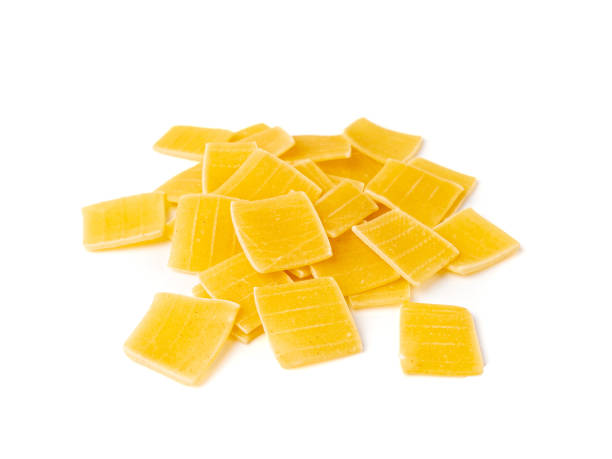Introduction
Somewhere between myth and memory, between stitches and secrets, lies Gessolini. Not quite a place, not entirely a name, and definitely not your average artform—Gessolini is a living thread of storytelling, reborn in fabric, function, and flair. Never heard of it? That’s not surprising. Even the most well-traveled artisans or historians often brush past it like a ghost in a crowded market.
So, what exactly is Gessolini? Is it a person? A style? A philosophy?
The answer’s a little bit of everything—and a lot of mystery.
The Origin of Gessolini: Threads of the Unknown
A Whisper in the Wind
The tale of Gessolini doesn’t start with dates and definitions—it starts with whispers. Long ago, in the hilly borderlands of southern Europa (yes, that Europa, the one they never put on maps), wandering nomads spoke of a family who could “weave memory into fabric.”
These weren’t your typical tailors. They used materials nobody else dared touch—stone-threaded silks, mist-dyed linens, even bark-spun wool. They worked in silence, letting the cloth speak for itself. And these artisans? They were called the Gessolini.
Etymology? Kinda Sketchy
Language purists have tried breaking down the word “Gessolini” to trace its roots. Some claim it stems from “gesso” (Italian for chalk), suggesting a connection to artistic priming. Others say it’s tied to “linum” (Latin for flax), referencing its textile roots.
But ask a true follower of Gessolini lore, and they’ll tell you:
“It doesn’t matter where it came from. What matters is that it never left.”
Gessolini in Practice: Not Your Grandma’s Needlework
So… What Is It, Really?
To the untrained eye, Gessolini looks like slow fashion meets folklore—handwoven shawls, tactile storycloths, and runic embroidery etched into the seams. But isn’t about trends or aesthetics. It’s about encoding stories—memories, dreams, even traumas—into the very structure of what you wear.
The Three Golden Threads of Gessolini
Whether you’re crafting a belt or a battle cloak, Gessolini adheres to three silent rules:
-
The Thread Must Know Your Truth
The base thread is soaked in a personal tincture—be it ash, wine, tears, or river water from a childhood place. If it’s not yours, it won’t hold. -
No Pattern Is Repeated
Every piece is one of one. Repetition is considered “story decay.” Once a design is done, it must never be copied—only evolved. -
Silence While Stitching
Talking disturbs the thread’s memory. is done in quiet, often in candlelight. Some claim the fabric hums back if you listen long enough.
From Shadow to Spotlight: The Gessolini Revival
Enter the Underground Crafters
In the last few years, small workshops and artist collectives from Berlin to Bogotá have stumbled upon (or been initiated into) the ways of Gessolini. They’re not broadcasting it with neon signs. Instead, they host word-of-mouth stitch circles, where members bring materials that “mean something,” and leave with garments holding cryptic tales.
The Rise of the “Memory Seam” Trend
What started as a hidden practice is now seeping into mainstream art. Designers have begun incorporating “memory seams” into their collections—stitching in initials, phrases, or even coordinates of lost places. High fashion? Sure. But it’s more than flair—it’s storytelling through touch.
Famous (and Infamous) Gessolini Pieces
1. The Cloak of Gilda Vireo
A single black cloak woven over nine years by a widowed disciple. Each thread was dipped in a different year’s first rainwater. It was never sold, only passed on through whispers.
2. The Sash of Endless Sleep
Legend has it that this embroidered sash could lull even the most tormented soul into peace. While its existence is debated, a worn version surfaced at an estate sale in Oslo—fetching over $100,000.
3. The Five-Fold Veil
Believed to conceal the face and true intentions of the wearer. Crafted only once, and reportedly worn by a war mediator in 1743. The conflict ceased days later.
How to Tell If Something Is Gessolini
It’s Not Just About the Look
Real Gessolini isn’t flashy. It’s subtle, almost forgettable—until you touch it. There’s often:
-
Uneven threading in symbolic areas (intentional)
-
Hidden messages or sigils under seams
-
Slight temperature changes when worn (seriously)
Common Traits
-
Unmarked labels
-
Natural or symbolic staining (wine, ash, rosewater)
-
One-of-a-kind stitching curves
-
No online store or barcode
If it looks mass-produced? It ain’t Gessolini.
Modern-Day Applications: Wearing Your Wounds (and Wonders)
Gessolini in Mental Health
Believe it or not, therapists are exploring the use of -style crafting in trauma therapy. By externalizing memory into tactile form, individuals reportedly feel a sense of release—without needing to verbalize every detail.
Memorial Weaving
Families have started commissioning Gessolini crafts from the belongings of loved ones—shirts turned into tapestries, scarves stitched with ashes. It’s grief turned into legacy.
Fashion That Fights Back
Activist circles have adopted Gessolini coding—embedding protest dates, symbols, and encrypted phrases into clothing. It’s subtle resistance, sewn into skin.
FAQ: Curious About Gessolini?
Q1: Is Gessolini an actual brand?
Nope. It’s more a movement than a label. Think underground guild meets living artform.
Q2: Can I learn Gessolini techniques online?
You might find threads (pun intended) here and there, but true practitioners prefer face-to-face transmission. That said, some encrypted guides exist on obscure textile forums.
Q3: Is it a religious practice?
Not exactly. But it does carry spiritual weight for many. It’s more personal mythology than organized belief.
Q4: Where can I find real Gessolini work?
Check local artisan markets, especially in Southern Europe, South America, or Southeast Asia. Avoid anything that smells of mass-production or influencer hype.
A Few Don’ts for Gessolini Newbies
-
Don’t imitate a known piece. Ever.
-
Don’t treat it as just fashion. is storywear.
-
Don’t stitch while angry. It will warp the thread’s memory.
-
Don’t photograph the process without permission. Some say it weakens the thread’s integrity.
Gessolini in the Future: Where Is It Heading?
Digital vs. Tangible: Can They Coexist?
A few tech-savvy artisans are experimenting with embedding NFC chips in Gessolini cloth—linking to spoken-word memories or ancestral poems. Critics call it “too synthetic.” Supporters? They see it as evolution.
Education or Elitism?
As Gessolini becomes more buzzworthy, there’s a risk of gatekeeping. Some argue it should remain secretive, others push for inclusivity. Only time—and thread—will tell.
Conclusion: A Thread in Time
Gessolini isn’t for everyone. It’s slow, silent, and strange. But for those willing to sit with a needle and let their memories guide their hand—it’s transformation. A conversation between past and present. A tangible archive of emotion and experience.
So next time you see a seemingly ordinary scarf with a swirl you’ve never seen before, look closer. Feel the warmth, trace the thread. Who knows?
You might just be wearing a Gessolini story.







